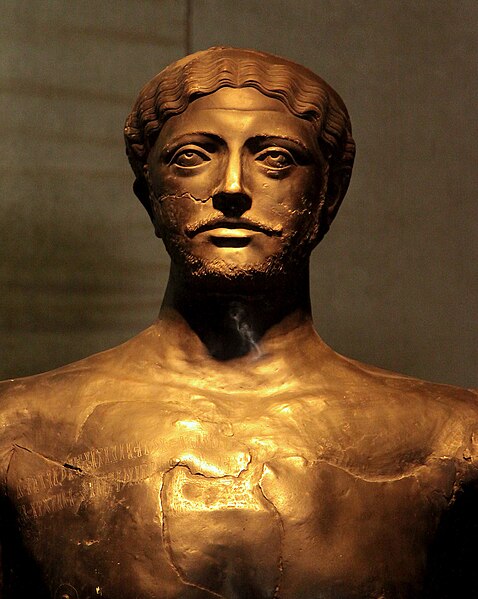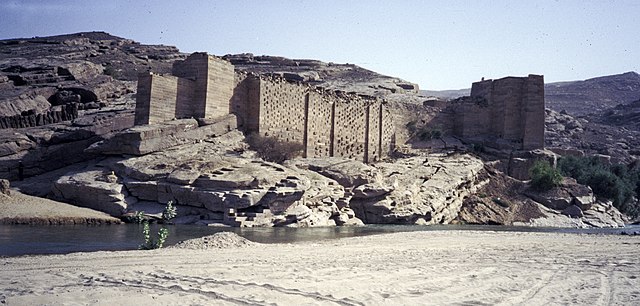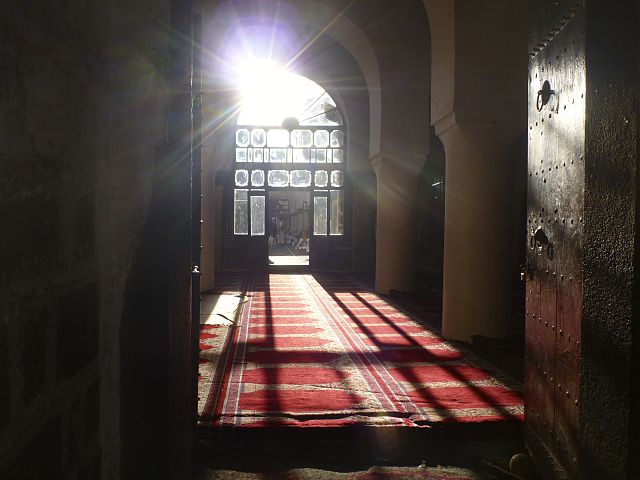The Himyarite Kingdom was a polity in the southern highlands of Yemen, as well as the name of the region which it claimed. Until 110 BCE, it was integrated into the Qatabanian kingdom, afterwards being recognized as an independent kingdom. According to classical sources, their capital was the ancient city of Zafar, relatively near the modern-day city of Sana'a. Himyarite power eventually shifted to Sana'a as the population increased in the fifth century. After the establishment of their kingdom, it was ruled by kings from dhū-Raydān tribe. The kingdom was named Raydān.
Bronze statue of Dhamarʿalīy Yuhbabirr "King of Saba, Dhu Raydan, Hadhramawt and Yamnat" (Himyarite Kingdom) 170–180 AD.
Himyarite inscription of King Dhu Nuwas left near Najran, Saudi Arabia. Dated to the 6th century AD
Coin of the Himyarite Kingdom, southern coast of the Arabian Peninsula, in which ships passing between Egypt and India would stop. This is an imitation of a coin of Augustus. 1st Century CE.
Yemen, officially the Republic of Yemen, is a sovereign state in West Asia. Located in the southern Arabian Peninsula, it borders Saudi Arabia to the north, Oman to the northeast, and the Indian Ocean to the south, sharing maritime borders with Eritrea, Djibouti and Somalia across the Horn of Africa. Covering roughly 528,000 square kilometres, with a coastline of approximately 2,000 kilometres, Yemen is the second largest country on the Arabian Peninsula. Sanaa is its constitutional capital and largest city. Yemen's estimated population is 34.7 million, comprised mostly of Arab Muslims. It is a member of the Arab League, the United Nations, the Non-Aligned Movement and the Organisation of Islamic Cooperation.
Ruins of the Great Dam of Marib.
Himyarite King Dhamar'ali Yahbur II.
A Sabaean gravestone of a woman holding a stylized sheaf of wheat, a symbol of fertility in ancient Yemen.
The interior of the Great Mosque of Sana'a, the oldest mosque in Yemen






